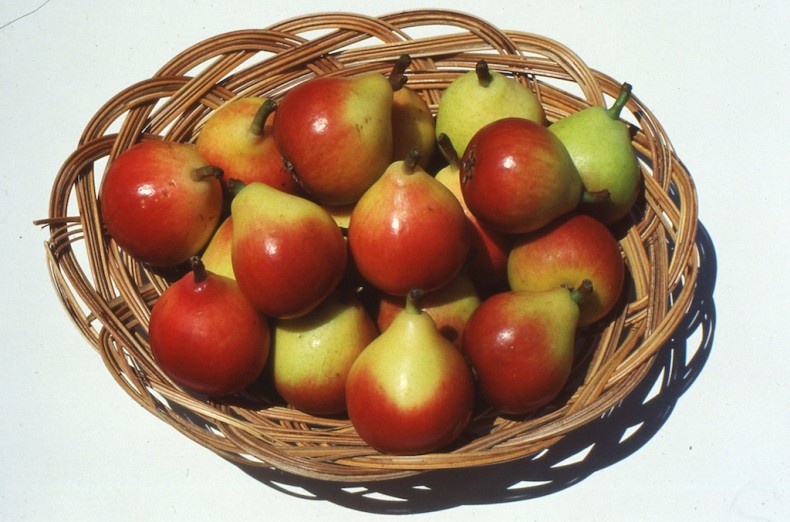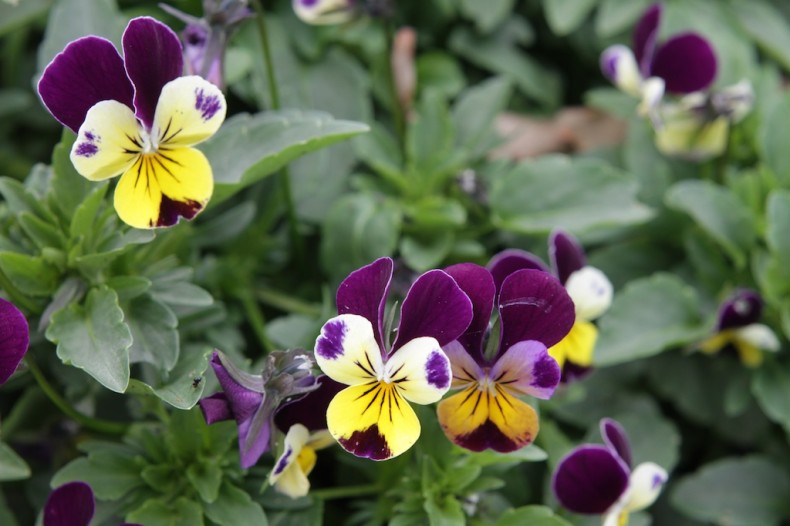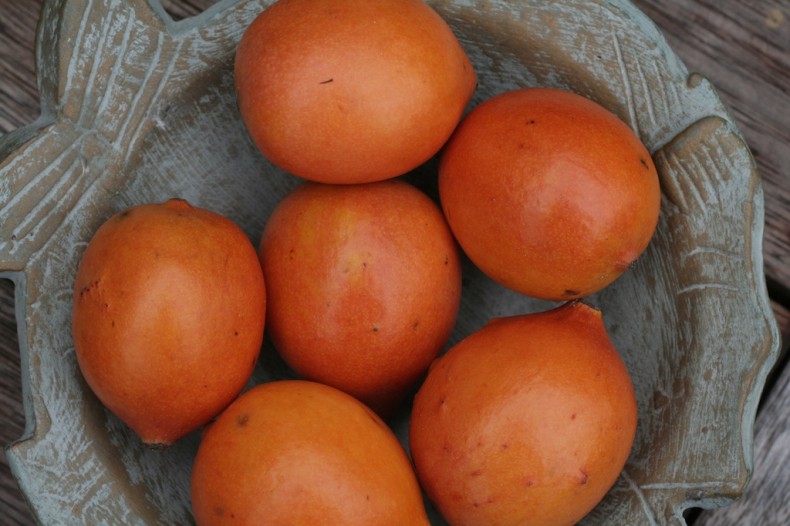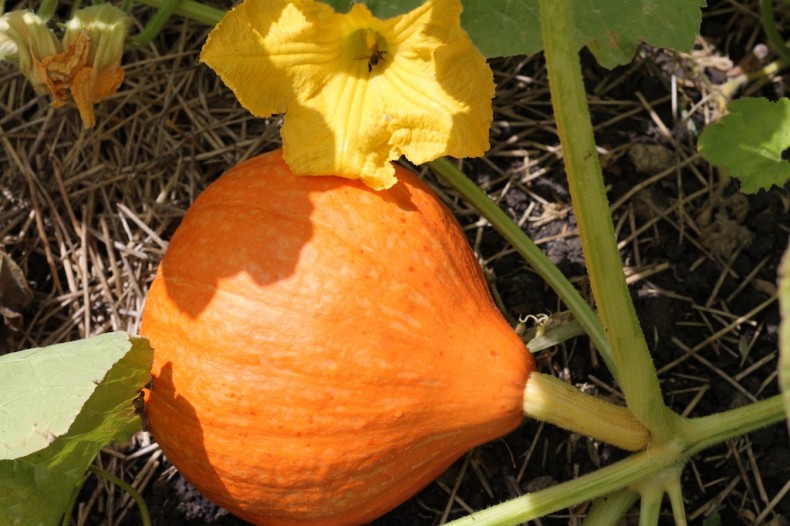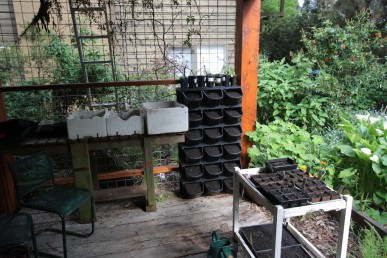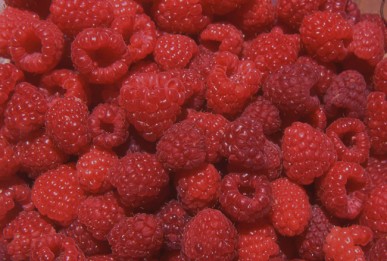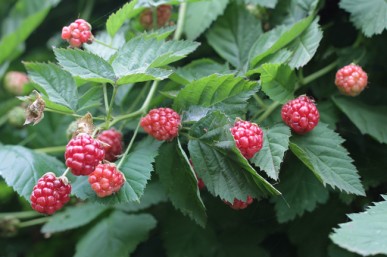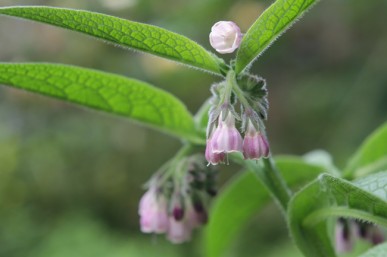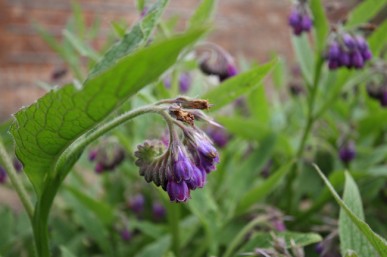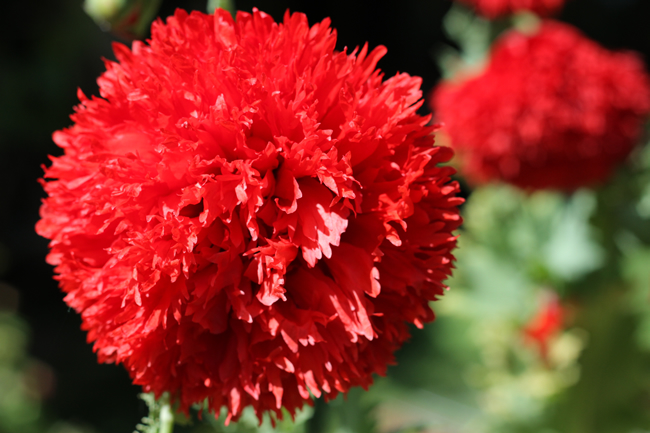By Gail Thomas
There’s nothing better than a fresh juicy ripe pear, simply by itself, as a perfect match with a glass of Sauternes or in any number of sweet or savoury dishes. Kicking off the season in January and February are the delightful tiny paradise pears, also sometimes known as sugar pears, crystal pears or faccia bella, with their rosy blushed cheeks. Continue Reading
By Penny Woodward
Heartsease (Viola tricolor) is a member of the viola family, closely related to pansies and violets. It has acquired an intriguing list of names over its long history, names that reflect its diverse characteristics. Some call it Johnny-jump-up and kit-run-about, both names earned by its endearing habit of suddenly appearing and then thriving in odd corners of the garden. In spring more than two years ago I planted heartsease in one corner of my garden. It grew quickly and flowered prolifically until the weather got really hot and dry. The plants died and much of the seed dropped to the ground, the rest I sprinkled around the garden. The following autumn many new plants poked their oval-shaped green leaves through the soil and a few weeks later began to flower. The cycle has repeated itself and I’m now at the point where I’m waiting for cooler weather and rain, and wondering where the new plants will appear this time. Continue Reading
By Gail Thomas
Achacha (pronounced ah-cha cha), the Aussie name for achachairú (Garcinia humilis selecto) have been savoured for centuries in the Amazon Basin of Bolivia and are now being grown in North Queensland.
With its name translating as ‘honey kiss’ egg shaped achachas are a cousin to the mangosteen, boast a vibrant orange hued skin, creamy flesh and zingy clean sorbet-like flavour and usually contain one (sometimes more) large brown seed.
The trees produce their first crop at around seven years, have a lifespan of at least thirty years and it is estimated that each mature tree will produce about 3,000 fruit.
The ripe fruit is harvested by hand from December to mid March and are non-climacteric – i.e. they won’t ripen further after being harvested. Continue Reading
And other Cucurbits like zucchini, marrow and cucumber.
By Penny Woodward
Pumpkins, zucchini, marrows and cucumbers need bees to pollinate their flowers before the fuit will set and start to grow. These plants all have male and female flowers and the bees need to fly into the male flowers, collect the pollen while feeding on nectar and then carry the pollen to the female flower. If this doesn’t happen then the little pumpkin (or zucchini or cucumber or marrow) that has started forming at the base of the female flower, will yellow and fall off. Continue Reading
By Penny Woodward
Mints Mentha spp. Lamiaceae.
The mint family is extremely varied and it is often difficult to identify individual species because of their tendency to hybridise. There is also confusion with both common and scientific names.
Mints are easy to cultivate and can be grown from seed or by root division in spring and summer. As they spread rapidly from underground runners, they should be contained. These days I grow all my mints in pots. This not only stops them from taking over the garden, but also helps to stop them getting mixed up with other mints. They prefer a humus-rich soil, reasonable drainage and semi-shaded condtions, although they will grow in full sun as long as the soil is not too dry. Continue Reading
By Penny Woodward
For the last few months I have been experimenting with a Gro Wall. I have been pretty unimpressed with the many different systems for growing plants vertically to make the most use of limited spaces. They all looked pretty high maintenance (especially for water) and most seemed to be only suitable for growing succulents and other similar tough plants. This Gro Wall impressed me with the ease with which it can be put together and the large pots that should allow me to grow herbs and vegetables relatively easily, so I decided to test it out.
It needed to be positioned so that it was easy to access and in a spot where I would remember to water it. So my seed raising area seemed like a good spot. The only drawback was that it was side on to the light. This would mean that those pots on the right of the wall would get much more sun than those on the left. One way of overcoming this problem would be to plant sun loving herbs and vegies on the right, and shade loving on the left, the other is to move the pots on a regular basis so that all pots got equal light. One of the joys of this system is individual pots are easy to move, slotting in and out like drawers.
By Penny Woodward
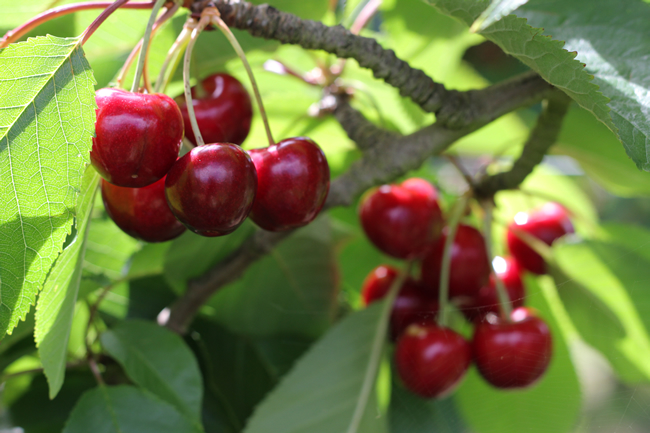 Christmas is the time for cherries in our neck-of-the-woods and recently while researching an article for Organic Gardener Magazine I was lucky to be able to visit Trevor Holmes at his Red Hill Cherry Farm. Trevor has been growing cherries here for more than 43 years (the oldest pick-your-own in Victoria) and as we wandered around the farm looking at various cherry trees we discussed cultivars, pruning, frosts, organics and biodynamic BD 500 mix. I went back again today to take photos of ripe cherries and as well as to buy some cherries to take home. Continue Reading
Christmas is the time for cherries in our neck-of-the-woods and recently while researching an article for Organic Gardener Magazine I was lucky to be able to visit Trevor Holmes at his Red Hill Cherry Farm. Trevor has been growing cherries here for more than 43 years (the oldest pick-your-own in Victoria) and as we wandered around the farm looking at various cherry trees we discussed cultivars, pruning, frosts, organics and biodynamic BD 500 mix. I went back again today to take photos of ripe cherries and as well as to buy some cherries to take home. Continue Reading
by Gail Thomas
Pennyroyal Raspberry Farm
Pennyroyal Valley in Victoria’s Western District was well known as a berry growing area from late 1800′s to post World War 2 with old steam train tracks set along the valley floors for the fruit to be transported by train to Geelong. Mike and Katrine Juleff have lived in the region since 1987 and twelve years ago took over the 7.8ha Pennyroyal Raspberry Farm which is the oldest operating berry farm in the district. Continue Reading
By Penny Woodward
Comfrey (Symphytum species) is a multi-purpose plant that has a place in every organic and permaculture garden. It comes originally from Europe and is an herbaceous perennial in the Boraginaceae family. It’s natural habitat is damp, grassy places like river banks and ditches. The large, hairy leaves grow in a clump up to a height of about 1m and about 1m across. Flowers are bell-like, grow in clusters and can be mauve, purple, pink and white. Continue Reading
This had nothing to do with edible and useful, I just wanted to mention how much pleasure I am getting from the red flowers in my garden. Probably the most dramatic is the blood red paeony poppy. This one self sows around my garden, popping up in odd corners, often flowering where I don’t want it, but I try to leave it in place at least until it flowers. I then hoick it out leaving room to plant something else. At least one plant is left to set seed, and there are thousands. I sprinkle these around the garden, thus ensuring that the whole process will be repeated next year. Continue Reading

